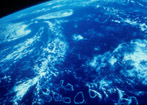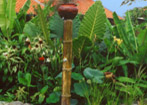|
Sullivan Patch, Milne Bay
3rd April 2006
We dived at Sullivan Patch, a site we had dived a few years ago.
Bob Halstead had told us of a crown of thorns infestation and
anchor damage on the reef. The coral substrate was poor, especially
around the shallower parts of the bommie, but the fish life was
as spectacular as we remembered - mackerels, sharks, big eye trevally,
fusiliers, anthias, surgeonfish - so incredible that we squeezed
in one more dive before it was time for us to make our move towards
Alotau.
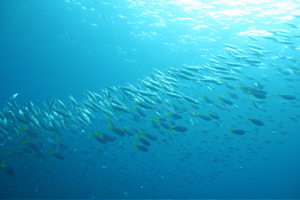
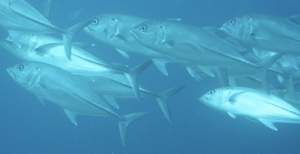
Alotau
4th - 9th April 2006
Before leaving Alotau, we wrapped up our business there including
a final meeting with the Chairman of the canoe festival regarding
November’s events. This time we anchored a few miles further
into the bay, in front of a drydock run by a Greek Cypriot called
Julius and managed by a Cook Islander called Mannix. They became
firm friends of Heraclitus and will be looking out for us on our
return later in the year. The company is called Nawae Construction
and they have been contracted all over PNG to build roads, bridges
and put markers on many of the reefs we have dived. Julius hopes
to revive the ship-building history of Milne Bay.
We departed, looking forward already to our retun here later
in the year.
Voyage to Rossel Islands, Milne
Bay
9th - 14th April 2006
In our continuing exploration of the reefs of Milne Bay, we anchored
at Byron Island for a night. We found incredible sea fan formations
in the lagoon and a friendly group of fishermen camping on the
island.
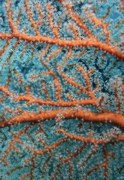

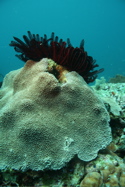
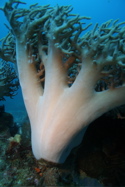
We met a pod of pilot whales on our way towards
Rossel Islands. We approached them cautiously and they remained
resting on the surface so we lowered the Zodiac to investigate
a little closer. They stayed near to us for about two hours.
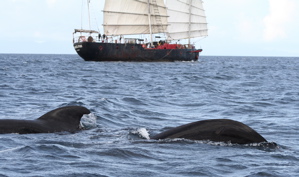
Before arriving at the Rossel Islands, our final
destination in PNG, we stopped at a very small uninhabited island
called Manuga Reefs. We kept Heraclitus at heave to while
sending dives out to explore this remote and uninhabited outcrop.
The reef was a sheer wall in places with healthy hard and soft
coral cover. Rock piles were smothered in guano-creating blue-footed
boobies.
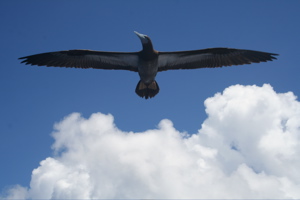
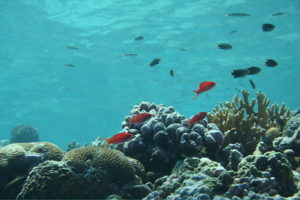
above and below the waterline at Manuga Reefs
|



